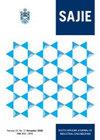A FUZZY EVENT TREE METHODOLOGY MODIFIED TO SELECT AND EVALUATE SUPPLIERS
IF 0.5
4区 工程技术
Q4 ENGINEERING, INDUSTRIAL
引用次数: 3
Abstract
The supplier selection problem be comes more urgent as competition in the market increases. Quality, cost, and the timely delivery of a product mostly depends on the manufacturer’s suppliers and the materials supplied. Therefore manufacturers are very elaborate in selecting their suppliers and work hard to develop supplier selection strategies. In this study, event tree analysis (ETA) is used to solve a manufacturing firm’s supplier selection problem. ETA is a method that is traditionally used for risk analysis problems, combining the probabilities of risk occurrences subject to the necessary precautions. In this study, this structure is used to select and evaluate suppliers. An event tree is developed to analyse each possible supplier, with branching being used according to the supplier selection criteria. The probability of each branch is set as the performance value of the supplier according to the selection criteria. Finally, the supplier is evaluated by combining all performance values on an event tree basis. Fuzzy logic is also incorporated into the event tree methodology to decrease human error and the effect of uncertainty. Fuzzy triangular numbers are used to denote the performance values of suppliers, and fuzzy ranking is used to distinguish the suppliers into classes. The proposed methodology is applied to nine possible suppliers of a specific material. The results reveal that two of the suppliers dominate all the others in the fuzzy ranking.一种改进的模糊事件树方法用于供应商的选择和评价
随着市场竞争的加剧,供应商选择问题变得更加紧迫。产品的质量、成本和及时交付主要取决于制造商的供应商和所提供的材料。因此,制造商在选择供应商时非常谨慎,并努力制定供应商选择策略。在本研究中,事件树分析(ETA)被用来解决制造企业的供应商选择问题。ETA是一种传统上用于风险分析问题的方法,将风险发生的概率与必要的预防措施相结合。在本研究中,该结构用于选择和评估供应商。开发了一个事件树来分析每个可能的供应商,并根据供应商选择标准使用分支。根据选择标准,将每个分支的概率设置为供应商的绩效值。最后,通过在事件树基础上组合所有性能值来评估供应商。模糊逻辑也被纳入到事件树方法中,以减少人为错误和不确定性的影响。模糊三角数用于表示供应商的绩效值,模糊排序用于将供应商分类。拟议的方法适用于某一特定材料的九个可能供应商。结果表明,在模糊排序中,两个供应商在所有其他供应商中占主导地位。
本文章由计算机程序翻译,如有差异,请以英文原文为准。
求助全文
约1分钟内获得全文
求助全文
来源期刊
CiteScore
1.10
自引率
20.00%
发文量
15
审稿时长
6 weeks
期刊介绍:
The South African Journal of Industrial Engineering (SAJIE) publishes articles with the emphasis on research, development and application within the fields of Industrial Engineering and Engineering and Technology Management. In this way, it aims to contribute to the further development of these fields of study and to serve as a vehicle for the effective interchange of knowledge, ideas and experience between the research and training oriented institutions and the application oriented industry. Articles on practical applications, original research and meaningful new developments as well as state of the art surveys are encouraged.

 求助内容:
求助内容: 应助结果提醒方式:
应助结果提醒方式:


